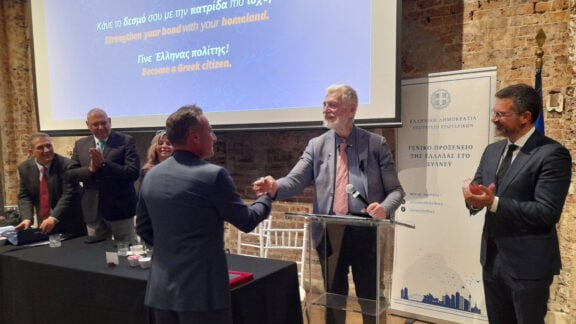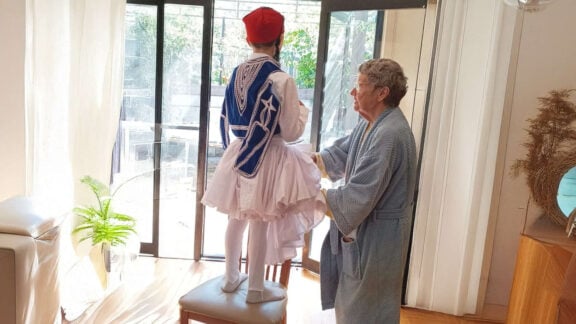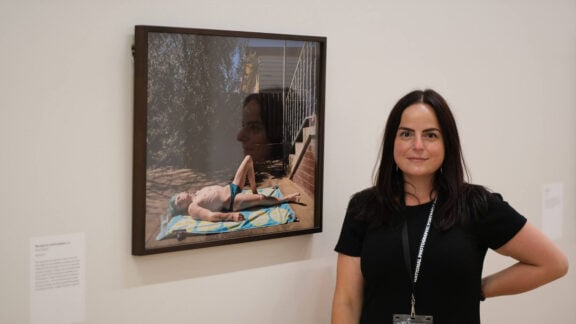The following story is part of Neos Kosmos’s campaign to raise awareness on domestic violence. Electra (not her real name) is 58 years old, a mother of five children, a professional and a student. Her life has been marked by violence, both as a child and as an adult, which resulted in “trauma bond”, a psychological condition that locks victims into abusive relationships.
Violence disguised as love
Electra grew up in a home where violence was a daily reality. Her parents, trapped in a vicious cycle of abuse, and the notion developed that violence was a form of love. This experience caused her to associate violence with love, shaping her future relationships. A “trauma bond” developed and became the thread that connected her to abusive partners, creating a deep and unhealthy dependency.
Her last relationship lasted eight years, during which 18 restraining orders were issued to protect her from her partner’s violence. At its peak, her partner attempted to strangle her, and left her in a coma. After this incident, Electra sold her house, left him, and tried to build a new life with her two younger children living with her.
However, the trauma bond drew her back to him.
They began to communicate by phone and, eventually, he convinced her to live together again.
“At first everything was perfect and amazing” Electra said.
“There were times when I thought we could make things work. He convinced me that he would change, and I believed him.”
That didn’t last long and soon, the cycle of abuse began again.
Electra’s partner controlled every aspect of her daily life. He visited her on her lunch break at work, to ensure that she did not associate with anyone else. He forbade her from going out, meeting her sister, or friends, and isolated her completely.
He took advantage of her money and verbally and physically abused her whenever she attempted to work more, so as not affect his Centrelink allowance.
On-going injustice
Electra soon found herself outside the police station for three hours tormented by doubts. “Should I go in? Should I not go in?” she said herself, as she struggled with fear and insecurity.
She knew she should report him, but the trauma bond and his constant threats pinned her down.
“I’m going to kill you…” he would often threaten her life.
When Electra finally found the strength to move on, her partner began to hound her every move.
He was angered by her decision to return to full-time work, given her savings had been depleted. Her partner went to the police with what she said was an “absurd accusation” that she was tapping his phone and changing his details on his accounts on online shopping sites. He even sought an injunction requiring her to stay 200 metres away from the house – a house she was paying for.
Electra, already exhausted from the abuse, found herself once again trapped in a situation where the “truth was being twisted” against her. His audacity to reverse the roles of perpetrator and victim reinforced the sense of injustice that had accompanied her all these years.
Apex of violence
The situation reached a critical point three months ago, when her partner broke two of her teeth and tried to strangle her again. This time, her 17-year-old son intervened, defending his mother.
The perpetrator was so enraged, he attacked the teenager as Electra tried to protect her child. She ended up with serious injuries to her face, and neighbours called the police.
The intervention led to a protection order for Electra but did not cover her son highlighting the gaps in the system in dealing with such incidents.
“That day I felt that he was going to kill us.
“I had reached my limit, but even then, something inside me kept me from believing that I could leave forever,” she says.
Vicious cycle of a trauma bond
Despite the facts, Electra admits that she “misses” her abusive partner.
“I know what he did is not right, but it’s hard for me – I think about him all the time,” she says.
The trauma bond ties her emotionally to him, as this is the way she has learned to experience love. This attachment shows how deeply rooted the psychological effects of abuse are.
“It’s like living in two worlds. One is the world of fear, and the other is the memory of the good times.”
Need for effective support
Electra’s shows that raising awareness of domestic violence is not enough. Victims need long-term support to enable them to break free from abusive men. Currently, support services only offer case managers for 12 weeks, after which contact is limited to weekly meetings with volunteers. It’s useful but insufficient for women who are completely isolated.
Moving victims from their local area to places they do not know, without sufficient social support, makes it even more difficult to move away from the abusive environment. More comprehensive support programmes could offer victims psychological help, support in developing economic independence, and reintegration into society.
Breaking the bond of trauma
For Electra – and anyone in a similar situation – to keep away from abuse, not only legal but long-term psychological support is needed. Trauma therapy, combined with social reintegration and education about the dynamics of abuse, may help breaking the cycle.
Electra, despite the hardship, remains a model of resilience.
She fights for her children, continues with her studies, and work.
Her story is a reminder that domestic violence is a social issue that requires collective action. The goal is not only to save a those caught up in violence, but to enable them live a life of hope and dignity.









